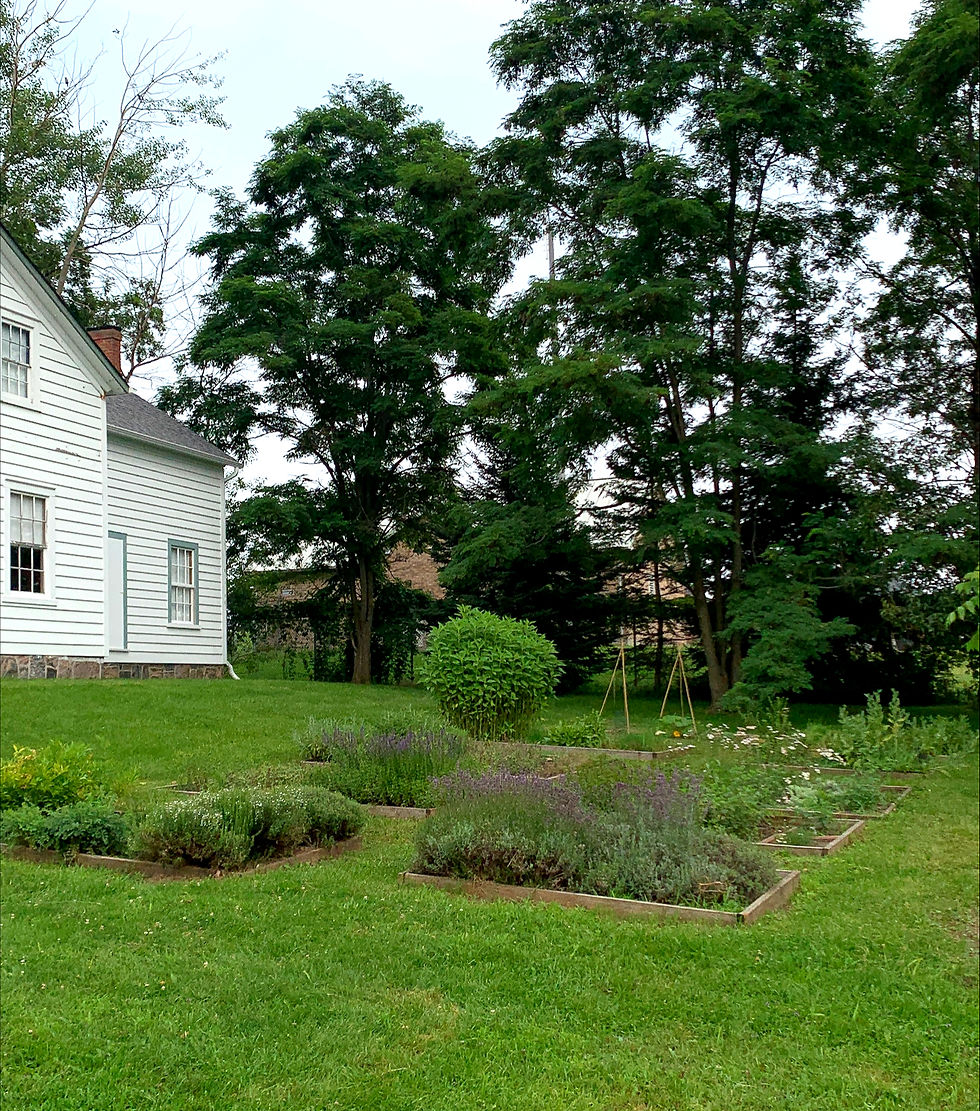Un-saving the Bees: How Honeybees Have Caused the Decline of Native Bees and How the UHC Heritage Herb Garden is Helping
- Jessie Nelson

- Jul 26, 2024
- 3 min read
Ever since the release of the hit documentary “Bee Movie”, the world has been more cognizant of the dangers of declining bee population. This is a joke, of course, but the fictitious animated film did reflect a growing understanding of the importance of bees. However, the movie also reflects a common misconception: honeybees are helping save the environment in North America.
The common honeybees that build elaborate hives and produce honey are not native to North America. Therefore, bringing honeybees into North America to help account for the declining bee population is the equivalent to planting hundreds of pine trees in the Amazon to help fight deforestation. While this may fix the lack of bees and trees, the environment will require its native species to recover.

Approximately 30 wild pollinators native to Canada have been identified under Canada’s Species at Risk Act (SARA), with roughly 25% being bee species. Two wild pollinator researchers, Sheila R. Colla PhD and Rachel Nalepa PhD, have found that these at-risk species are crucial to Canada’s economy, food security, ecological health, and cultural health.
The honeybees that have been introduced to Canada to help increase the bee population have contributed to this decline in native bee populations. This is largely due to pathogen spillovers which occur when a host organism transfers diseases and/or parasites to a new species that is unfamiliar with such pathogens. Honeybees have passed on many of the pathogens they passively carry to Canada’s native bees. The native bees have not built an immunity to these pathogens and, therefore, are greatly harmed by their presence.
Additionally, honeybees travel faster and farther, collect more pollen, and are more aggressive than most native bees. As described by researchers at McMaster University, “one colony of 10,000 honeybees may collect 10 kilograms of pollen over a three-month period, an amount that would support 100,000 solitary wild bees;” and, “honeybees bully some wild bees (...) even [forcing] burly bumblebees out of flowers.”

There are many ways to alleviate the challenges facing native bees. The first is to simply not keep honeybees. This may be easier said than done, especially for those whose livelihood depends on it. However, if you are considering keeping bees in the future to help save the bees, perhaps focus more on creating a better habitat for native bees.
Another strategy is planting native plants. For example, the UHC has planted coneflowers, tundra rose, false sunflower, and hydrangeas in our flower gardens. The Heritage Herb Garden features mostly herbs that were brought to the Americas by settlers, but also grows yarrow and sage: two native plants important to wild pollinators. Often the best tasting herbs are those which were not allowed to grow their flowers and seeds. However, for the sake of preserving native bees, the UHC has left most of the flowering herbs untouched. As a result, bumble bees can be found on the flowers of the hyssop, lavender, sage, savory, yarrow, and thyme plants throughout the growing season.
Additionally, most native bees are ground-dwellers who need foliage and exposed dirt to build their nests. Therefore, the UHC has left some of the cut leaves and trimmed plants in the herb garden beds as building materials for the bees who wish to stick around for the winter.
One final tip for saving the native bees would be to stop the use of any herbicides and/or pesticides. The Heritage Herb Garden was unfortunately plagued by a Japanese Beetle infestation this year. However, in the spirit of keeping the bees healthy, no chemicals were used and, instead, the beetles were picked out of the garden by hand.

While these strategies were slightly more labor-intensive, they were certainly worth it. When walking by the UHC’s Heritage Herb Garden it is impossible to ignore the buzzing of the wild pollinators hard at work. Hopefully, over time, the buzz will grow louder with a growing native bee population.

Sources:
City of Toronto. (2024, July 16). How to help wild bees & other native pollinators. City of Toronto. https://www.toronto.ca/services-payments/water-environment/live-green-toronto/help-native-bees-pollinators/#:~:text=The%20easiest%20and%20most%20effective,native%20bees%20need%20to%20survive.
Colla, S. R., PhD, and Nalepa, R., PhD. (2021). Conserving Canada’s Wild Pollinators: National Strategy Recommendations. Colla Lab: Conservation Science. https://www.savethebumblebees.ca/wp-content/uploads/2023/06/ConservingCanadasWildPollinators.pdf.
Irazuzta, S., Stegman, N., and Dudley, S. A. (2024, April 29). Analysis: Wild bees are under threat from domestic bees, invasive species, pathogens and climate change — but we can help. McMaster University. https://brighterworld.mcmaster.ca/articles/analysis-wild-bees-under-threat-from-domestic-bees-invasive-species-pathogens-climate-change-but-we-can-help/#:~:text=Impacts%20on%20wild%20bees,wild%20bees%20to%20pollinate%20them.
Kearney, H. Choosing where to get your bees. Flow. https://ca.honeyflow.com/blogs/beekeeping-basics/choosing-where-to-get-your-bees#:~:text=a%20similar%20climate.-,Honeybee%20breeds,giving%20thought%20to%20much%20else.
Species at Risk Act (S.C. 2002, c. 29). https://laws.justice.gc.ca/eng/acts/s-15.3/page-10.html.













Comments